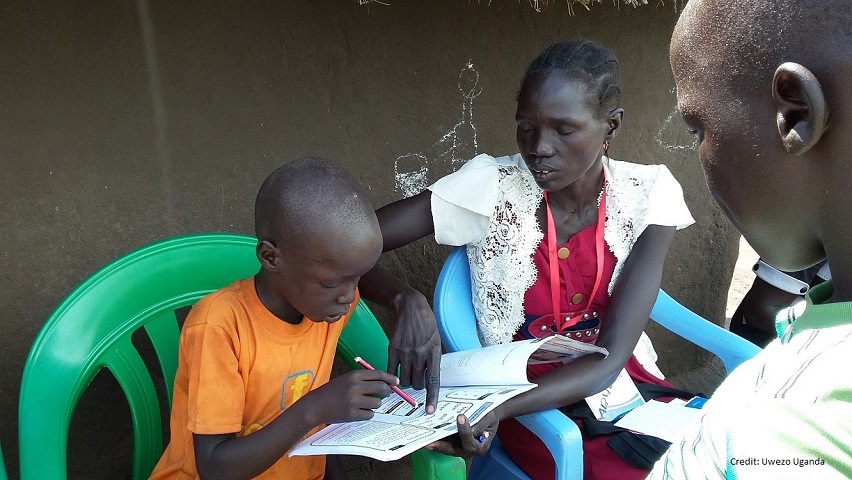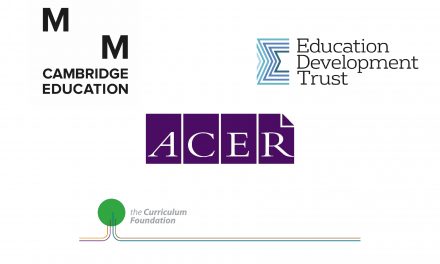This blog was written by Bea Simpson, PhD (Education) student at the University of Cambridge; Mary Goretti Nakabugo (PhD), Executive Director of Uwezo Uganda; and Ricardo Sabates, Professor of Education and International Development at the Faculty of Education, University of Cambridge.
The 2021 World Refugee Day theme ‘together we heal, learn and shine’ is a poignant proclamation of humanity’s commitment to support displaced people to thrive. In this blog, we narrate the learning realities of refugee children in Uganda, within the globalised context of early childhood education (ECE). The blog is a response to the September 2021 UKFIET conference presentation on ECE in Uganda, which was written against a backdrop of recent news of the arrival of 2,000 Afghani refugees in Uganda.
Studies in neuroscience, development economics, cognitive and biological sciences indicate that ECE lays the foundation for both short term benefits for both the individual and society. This includes improved school readiness which is linked to efficient school transition, better learning outcomes and completion rates, as well as long-term benefits, including improved health, employability and national development. Studies which demonstrated these positive effects of ECE were mainly based on disadvantaged populations, mainly in the global north and in particular the US. However, due to these many advantages, ECE is globalised as a justice tool and therefore, we set out to evaluate whether some of the short term benefits identified among disadvantaged children in the global north can be accrued among refugee and non-refugee children in Uganda. This blog represents part of the results from a study that addresses two research questions:
- What is the level of ECE access among refugees and non-refugees in Uganda and what factors affect access?
- To what extent does ECE access impact learning outcomes (English reading competences) among refugee and non-refugee children?
Results
Using the 2018 data collected by Uwezo Uganda, which contains information on ECE provision, access and English reading competences for refugees and for non-refugees living in similar areas, we provide the following key findings:
- Access to ECE
43% of refugee children accessed ECE as compared to 26% non-refugee children with a gender distribution of 46% and 42% of refugee boys and girls and 24% and 29% non-refugee boys and girls respectively.
There is a positive significant association between children from wealthier households and access to ECE when compared with poorer children. This gradient holds for both refugee and non-refugee children.
- ECE and English Reading Competences
Results indicated that those who had access to ECE also had higher English reading competences. This result holds for both refugees and non-refugees.
- Wealth, ECE and English Reading Competences
Two key findings are illustrated in Figure 1. First, wealth gradients on reading competences are prevalent for both refugee and non-refugee children who accessed ECE. A less marked gradient is obtained for children who did not access ECE. Second, reading competences for poor children who accessed ECE are comparable to those who had not accessed ECE from middle and wealthiest households. This means that while the highest reading competences are seen among the wealthiest children who also accessed ECE, the poorest children’s grades are improved to the same level as the wealthiest children who do not access ECE.
Lessons learnt and implications for policy
- Access to ECE is associated with higher reading competences, however, other confounding factors come into play, including household wealth which impacts both access to ECE and consequently impact reading competences. It is evident in this study that more refugees accessed ECE than their national counterparts, potentially due to increased investment within the refugee settlements which levelled out the barriers to access.
- The odds of a child from a poor household accessing ECE and attaining higher reading competences, are much lower when compared to those of a child from a wealthier household. This is the case for both refugee and non-refugee populations. The implication of the above lessons is for an equity-based model of investment, which targets children from the poorest households who are least likely to access ECE, potentially due to economic constraints.
- While there is a significant difference in the level of access of ECE between the refugee and non-refugee populations, there may also be aspects of quality of ECE provision, at least as indicated by differences in reading competences achieved by refugee and non-refugee children. For instance, poor 6 to 8 year old refugee children who accessed ECE achieved lower reading competences than poor non-refugees children who also attended ECE (Yellow Bars in Figure 1). Yet, this is not consistent among all the cohorts examined here (see yellow bars for the other cohorts), which means there have been changes in access to and quality of ECE which could account for the differences in reading competences obtained between refugees and non-refugees over time. Policy implications should emphasise increased provision and access, quality of ECE and equitable investments in order to maximise the benefits of ECE.
Overall, these results demonstrate that the compounding effects of poverty on ECE access and consequently, the impact on learning outcomes must be considered in any post-pandemic investment planning. This will negate the negative effects of lockdown, especially in Uganda where both refugee and non-refugee children have been out of school since March 2020 and a prediction of reopening in 2022 after two years.







